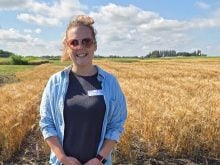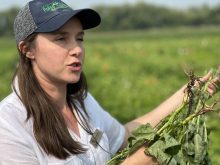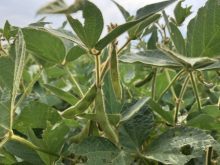Two years ago the Federation of Saskatchewan Indian Nations unveiled a program to expand the number of First Nations farmers in the province and increase investment in value-added projects like intensive livestock operations.
It hasn’t worked, said University of Saskatchewan animal and poultry science professor Red Williams, who was part of the FSIN agriculture task force.
“It’s not developing nearly as fast as they had hoped. I think that maybe their expectations were too high,” said Williams.
“A lot of the projects they envisioned were fairly large.”
Read Also

Fusarium head blight mycotoxin detector in the works
A PhD student at the University of Saskatchewan has been working on developing a method of detecting fusarium damaged kernels to ease the struggles of producers, agronomists and industry.
The goal was to create a First Nations agriculture industry that would eventually generate $100 million in economic activity.
A key component of the plan was to attract more Indian farmers, but that hasn’t happened.
When the First Nations Agricultural Program of Saskatchewan was unveiled in January 2002, 1.6 million acres of agricultural land was owned by First Nations’ bands, 80 percent of which was leased to non-native farmers.
“I don’t think that has changed any,” said Williams.
Little has happened on the value-added front either. One hog barn project that was gearing up last year has stalled.
A proposal to build a barn on the Poundmaker Cree Nation reserve near Cut Knife, Sask., was shelved when band members learned their land was to be used to guarantee a $3.5 million loan with Farm Credit Canada.
Williams said some of FSIN’s agricultural plans will eventually come to pass, but it won’t be fast because there are not too many First Nations people who want to farm and there isn’t much capital to help the few who do.
FSIN agrologist Ken Bear said agriculture is still a priority, but instead of going it alone, they are exploring how their program can be tied into the environment and renewal pillars of the new federal agricultural policy framework.
“We’re consulting with our First Nations farmers to get them thinking about how we could link the APF to this business plan approach under the First Nations Agriculture Council of Saskatchewan,” he said.
He wouldn’t comment on how much progress has been made over the past two years, other than to say there is still a need for more participation and value-added activity.
But he noted there has been an increase in Indian enrolment in agriculture programs at the University of Saskatchewan and good uptake in a youth livestock program, which introduces First Nations youth to the ins and outs of cow-calf operations.
Williams agrees youth involvement in education programs has been one bright spot, but he wonders if agriculture has taken a back seat to other spending priorities.
He said First Nations bands are only buying the minimum of land they are required to purchase under treaty land entitlement agreements and using the rest of the settlement money to build reserves in towns and cities.
“I have the sense they’ve changed their focus a little. That doesn’t mean that they’ve dropped agriculture, but they’ve suddenly decided these urban reserves are a little more likely to pay off,” said Williams.















